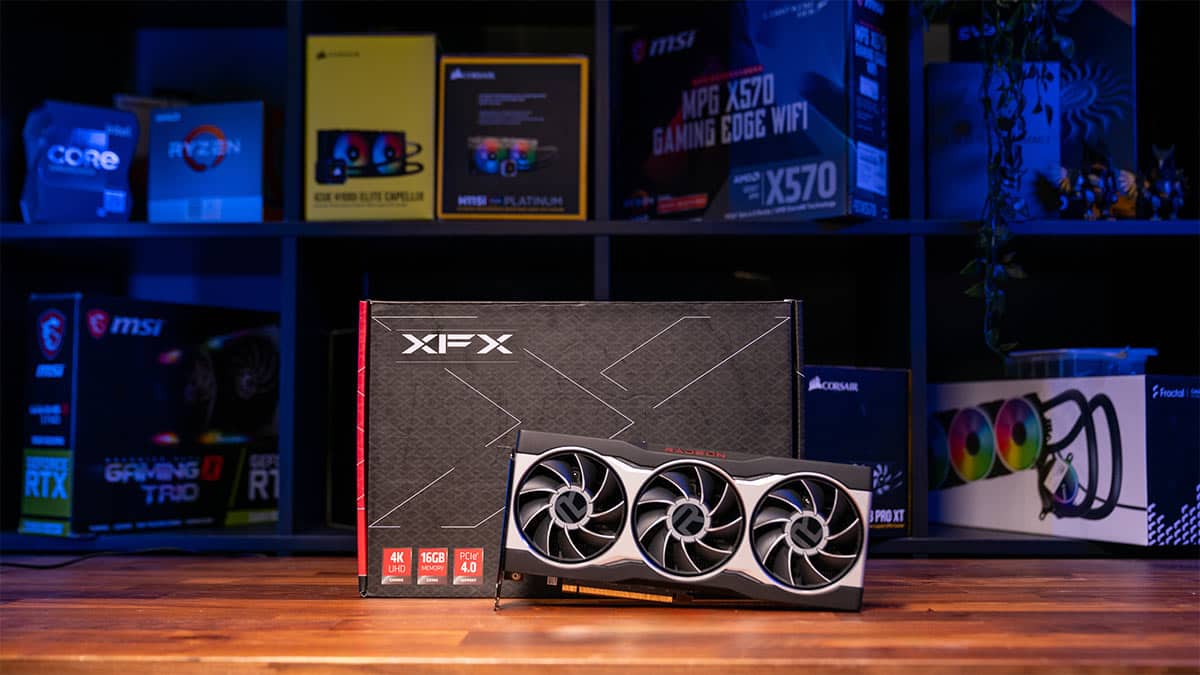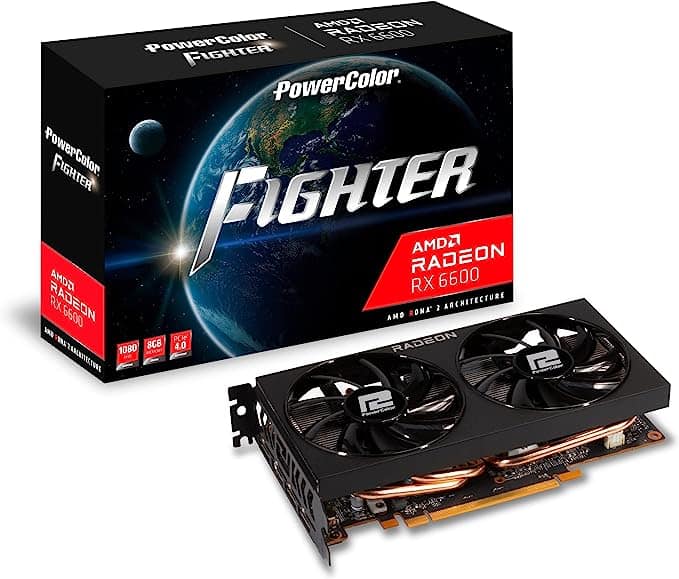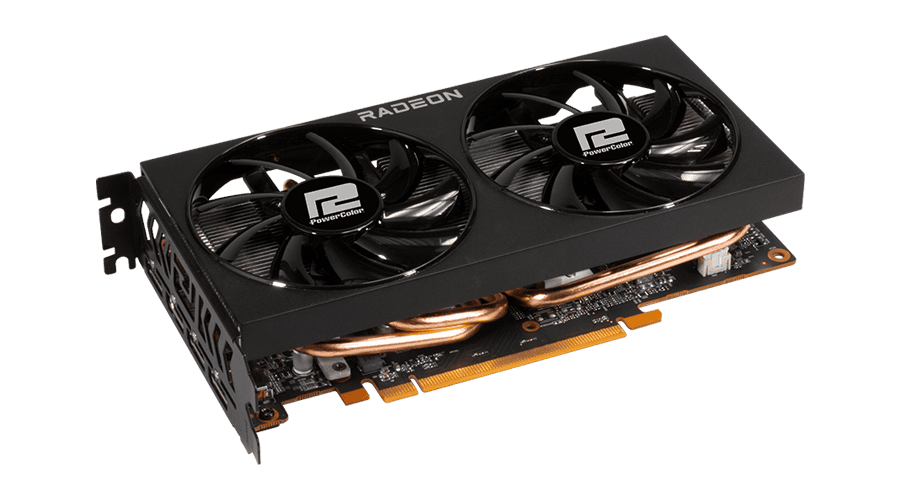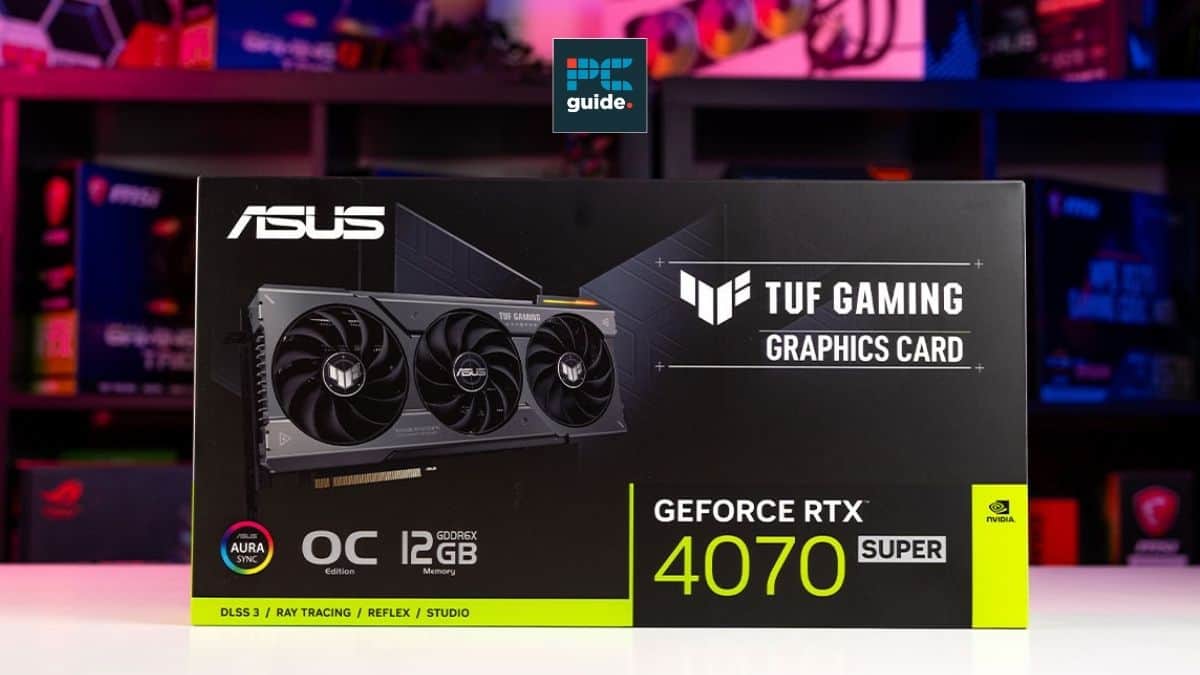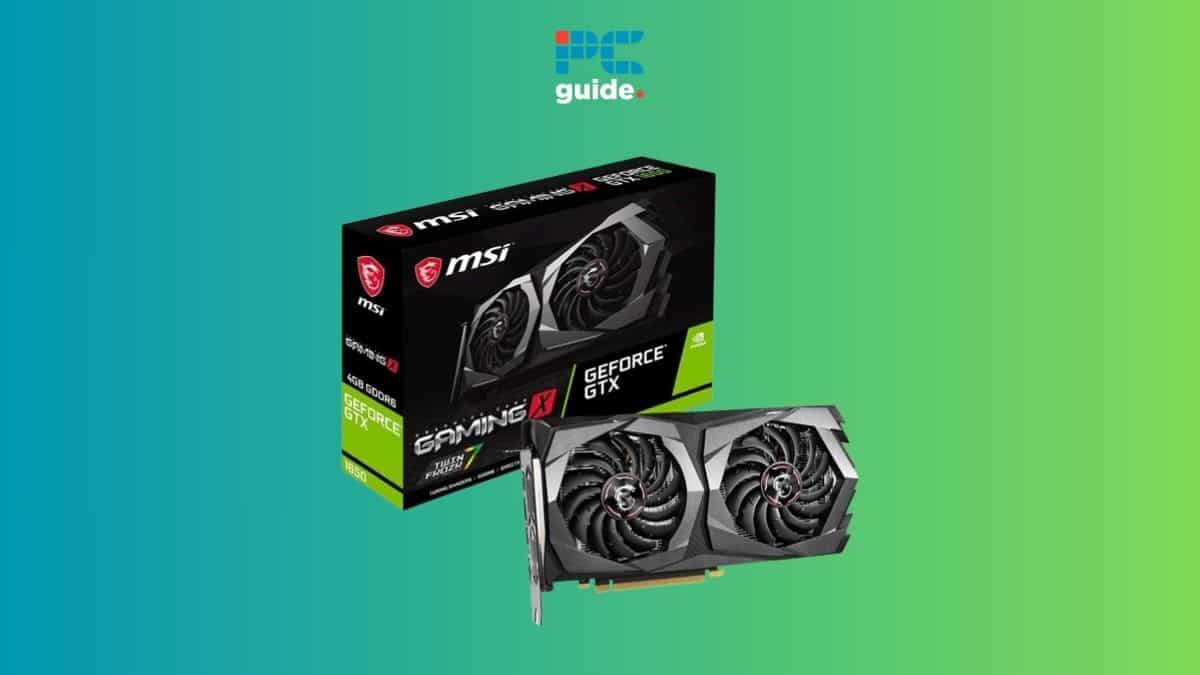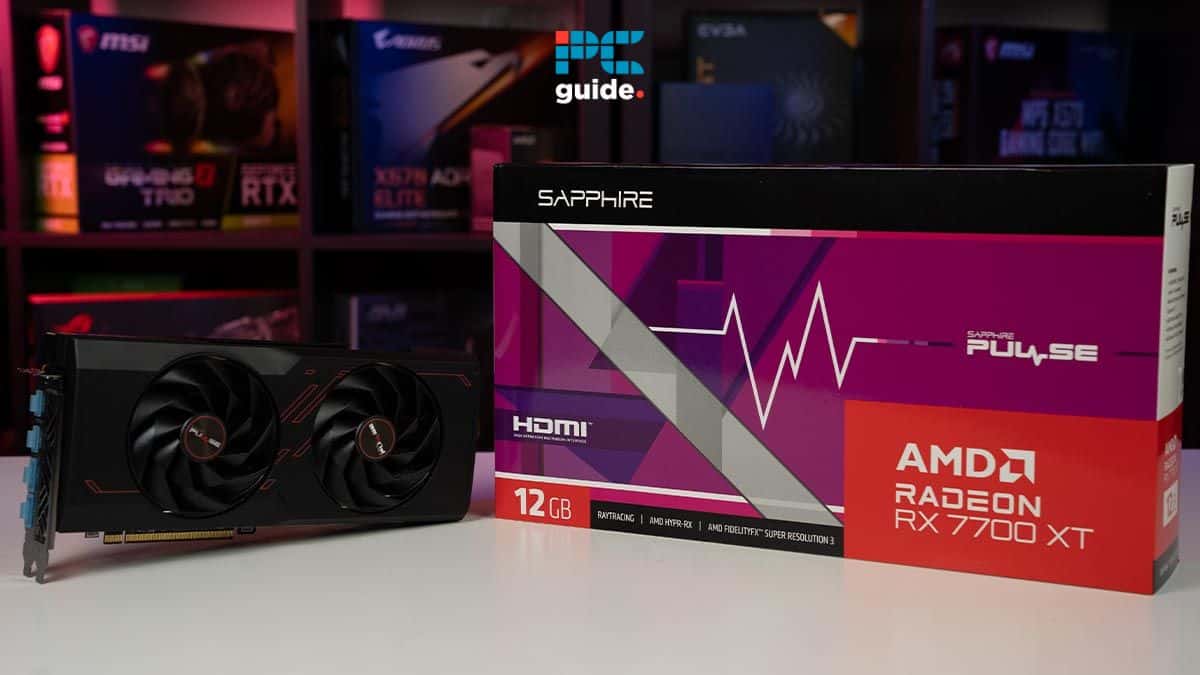If you want a graphics card for your build but don’t want to spend over 200 dollars, then we have you covered right here.
Finding the best GPUs under $200 can be a challenge, especially in a market where high-end GPUs often grab the spotlight with their premium pricing and advanced features. However, there is still a variety of options available that provide satisfactory performance. This article aims to guide you through some of the top contenders in this bracket, ensuring you can still enjoy a good gaming or content creation experience.
Graphics cards in the sub-$200 category are typically designed for entry to mid-level gaming, capable of running many modern games at decent frame rates on medium settings. While you may not be pushing ultra-high resolutions or the max settings on the latest AAA titles, these GPUs are more than sufficient for popular e-sports titles, video playback, and everyday creative work.
-
Best GPU under $200
PowerColor Fighter AMD Radeon RX 6600 – 8GB
- GPU: Navi 23
- Stream processors: 1792
- VRAM: 8GB GDDR6
- Bandwidth: 224.0 GB/s
- Memory bus width: 128-bit
- Base clock speed: 1626 MHz
-
Best NVIDIA GPU under $200
ASUS Dual Nvidia GeForce RTX 3050 OC
- GPU: GA106
- VRAM: 8 GB
- Base Clock Speed: 1552 MHz
- Boost Clock Speed: 1777 MHz
- Bus Width: 128 bit
- CUDA Cores: 2560
-
Best GPU under $200 for overclocking
PNY GeForce GTX 1660 Super 6GB XLR8
- GPU: Turing architecture
- CUDA Cores: 1408
- VRAM: 6GB
- Bandwidth: 336 GB/s
- Memory bus width: 192-bits
- Base clock speed: 1530 MHz
-
Best Intel Arc GPU under $200
Sparkle Intel Arc A580 ORC OC Edition
- Architecture: Xe HPG
- Xe-cores: 24
- VRAM: 8GB
- Bandwidth: 512 GB/s
- Memory bus width: 256-bit
- Clock speed: 1700 MHz
How we selected the best GPUs under $200
In picking the best graphics card under $200, we meticulously scoured through publicly available benchmarks and user reviews to determine which cards deliver the best performance and value for their price.
Furthermore, we considered the long-term viability of each card, taking into account factors such as the manufacturer’s reputation for durability and customer service. Now, we have reviewed a few of the listed GPUs hands-on to get a better feel of the product. You even have a dedicated page on how we test GPUs – so you can check out that process. For other products, we relied on the consensus from trusted industry experts and real-world user feedback.
Shopping for the best GPU with a $200 budget is a smart move, especially for smaller gaming PC builds, and it’s worth noting that many GPUs in this price range can also be used to revive old office PCs and prebuilts to turn them into proper gaming PCs. You can also check out our guide to the best GPUs for under $100 right here or the best GPUs for under $400 if you’re able to stretch a little further. Of course, for those with an even higher budget, take a look at the overall best graphics cards to weigh in on the best across the board from AMD and Nvidia.
If you’re building a new PC focused on 1080p gaming or older AAA games, or looking for a substantial upgrade from an integrated graphics solution, the PowerColor Fighter RX 6600 is a strong contender in the sub-$200 graphics card market.
- Low power consumption
- Respectable performance despite the price
- Contains the necessary specs for modern gaming
- Will require upgrading sooner than other GPU
- More impressive GPUs on the market overall
- Only just under $200 price bracket
Our top choice for the best GPUs under $200 is the RX 6600. In short, scoring the AMD Radeon RX 6600 for less than $200 has always been an amazing steal – especially if you want to game at 1080p.
To start with, the entry-level card is built on AMD’s RDNA 2 architecture, which features improved computing units, higher clock speeds, and an enhanced rendering pipeline. Further, it also offers Infinity Cache, which is a high-bandwidth cache that sits between the traditional GDDR6 memory and the compute units.
Plus, the 8GB of GDDR6 memory ensures you can crank up the graphics settings in your favorite games without stuttering. This, combined with the Infinity Cache, should reduce latency and improve overall performance.
Further, the base clock speed of 2044Mhz and boost clock of 2491Mhz offer strong performance out of the box. While not the highest clocks on the market, they are well-suited for 1080p gaming. And to keep everything running during intense battles, the card features a dual-fan cooling setup.
As far as connectivity is concerned, the card features a diverse range of video output options, including an HDMI 2.1 port and three DisplayPort 1.4 ports. This should allow for connection to modern high-refresh-rate monitors and other components.
Overall, the RX 6600 is ideal for budget-conscious gamers who are planning to game at 1080p. We think it offers excellent value with good performance, ample memory, and modern features at a competitive price point.
What users say
On Amazon, the AMD Radeon RX 6600 GPU has a rating of 4.5 stars, and it has been reviewed by over 2,300 people. Most people were satisfied with the performance of the card. They also mentioned that the GPU was small enough to fit into compact builds. One of the reviews read – “With its compact design, efficient cooling, and support for modern gaming features, the Fighter RX 6500 XT stands out as an excellent choice for budget-conscious gamers looking to build or upgrade their gaming rigs.” However, some reviewers said it was a bit noisy sometimes.
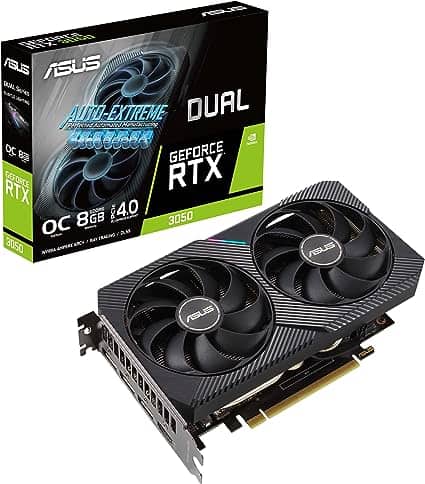
- GPU: GA106
- VRAM: 8 GB
- Base Clock Speed: 1552 MHz
- Boost Clock Speed: 1777 MHz
- Bus Width: 128 bit
- CUDA Cores: 2560
For gamers seeking a balance between price, performance, and the latest features like ray tracing, the NVIDIA GeForce RTX 3050 with 6GB of GDDR6 memory is a solid pick – especially for under $200.
- Great 1080p performance
- Can enable ray tracing at lower settings
- Features DLSS technology that can boost framerates
- Good cooling with Axial-tech fan design
- Not the most powerful option in RTX 30 series
If you prefer NVIDIA GPUs, then we think that the RTX 3050 is a solid pick for a little less than two hundred dollars.
To start with, the RTX 3050 is built on NVIDIA’s Ampere architecture, which is an improvement over the previous version. The RTX GPUs have Ray Tracing cores, Third-Generation Tensor cores, more memory bandwidth, and overall performance improvement.
Further, you also get support for DLSS 2.0, with which the GPU renders your games at a lower resolution and then upscales them to your monitor’s native resolution. This boosts performance without having to sacrifice visual quality.
The RTX GPUs have Ray Tracing cores, Third-Generation Tensor cores, more memory bandwidth, and overall performance improvement.
PCWer
Coming to the clock speeds, the GPU delivers a clock speed of 4000 MHz, which is sufficient to run 1080p games. And as far as memory is concerned, the GPU comes with 6GB of GDDR6 memory, which is sufficient for most current 1080p games at high settings. However, it might struggle a little with demanding games, so you might have to turn it down a notch by lowering the settings.
Now, to keep the graphics card running and prevent overheating, it features an axial-tech fan design that boosts downward air pressure. Further, it is a 2-slot design, which aims to improve cooling efficiency even in a small chassis. .
Overall, the RTX 3050 is a good choice for gamers who want to experience the benefits of ray tracing and DLSS at 1080p resolution without breaking the bank. It’s ideal for those building a new PC focused on 1080p gaming with an eye towards future-proofing with features like ray tracing or for users upgrading from older GPUs.
What users say
On Amazon, the ASUS Dual NVIDIA GeForce RTX 3050 has been reviewed by over 700 users and it has a rating of 4.6 stars. One of review reads, “This card does not get real hot, and runs cyberpunk 2077 medium settings with some things turned down, DLSS is at balanced setting, still getting good frames.” One the flip side, some users noted that this card is not suitable for high-end gamers.
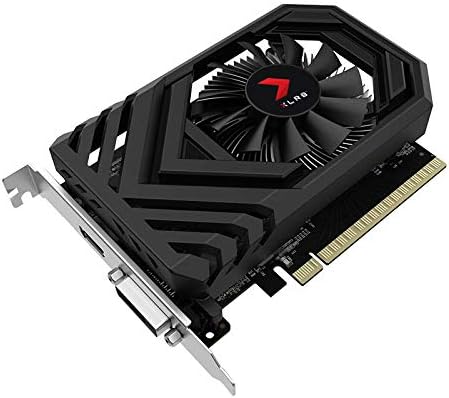
- GPU: Turing architecture
- CUDA Cores: 1408
- VRAM: 6GB
- Bandwidth: 336 GB/s
- Memory bus width: 192-bits
- Base clock speed: 1530 MHz
- Boost clock speed: 1785 MHz
If you are after a budget build for 108op gaming, then the PNY GTX 1660 Super is a suitable option. It’s good for gaming, decent for overclocking, and has a low price point.
- Overclocked for enhanced performance
- Sturdy build quality with TUF standards
- Great for 1080p and entry-level 1440p gaming
- Slightly higher price point within its tier
- No real-time ray tracing
- Requires additional power connector
If you want a budget GPU that is capable of overclocking performance, then we think that the PNY GeForce GTX 1660 Super 6GB XLR8 is a good pick.
To start with, the card sports NVIDIA’s Turing architecture, which brought real-time ray tracing for stunning visuals, Tensor Cores for AI acceleration, and improved performance with concurrent operations and faster memory.
While the official boost clock is listed as 1830Mhz (higher than the base 1530Mhz), it’s factory-overclocked, meaning PNY increased the base speed from Nvidia’s reference design. This can offer a slight performance edge over the base GTX 1660 Super. As far as memory is concerned, the GPU has a VRAM of 6GB, which should further boost your performance.
As you can guess, this is an entry-level card that’s designed for gamers who want a solid 1080p performance with the headroom to push into 1440p in some titles. With overclocking out of the box, users get a performance boost for a smoother gaming experience.
While the official boost clock is listed as 1830Mhz (higher than the base 1530Mhz), it’s factory-overclocked, meaning PNY increased the base speed from Nvidia’s reference design.
PCWer
An important thing to note here is that the PNY card comes with a single fan design. While this fan can cool down your GPU, it might struggle when the system comes under pressure. If you think overheating might be a problem, then you should consider cooling solutions or look for a dual-fan GPU.
Coming to connectivity, the card offers a standard selection of video outputs: DisplayPort, DVI-D, and HDMI, which should be enough to connect to all the necessary peripherals. However, note that this card does not have the newer HDMI 2.1 connection.
Overall, if you are looking for a budget graphics card that you can overclock for gaming, then the PNY GeForce GTX 1660 Super is a good choice. However, if you will be overclocking frequently, then a dual fan design would be a better option.
What users say
On Amazon, the PNY GeForce GTX 1660 Super 6GB XLR8 GPU has a rating of 4.5 stars, and it has been reviewed by more than 450 people. Most users were satisfied with the performance, speed, and quality of the card. They said it was a good mid-range GPU. One of the review reads, “Overall I think its a solid choice for 1080p gaming.” On the flipside, a few users complained that the card got warm when used for a long time under load.
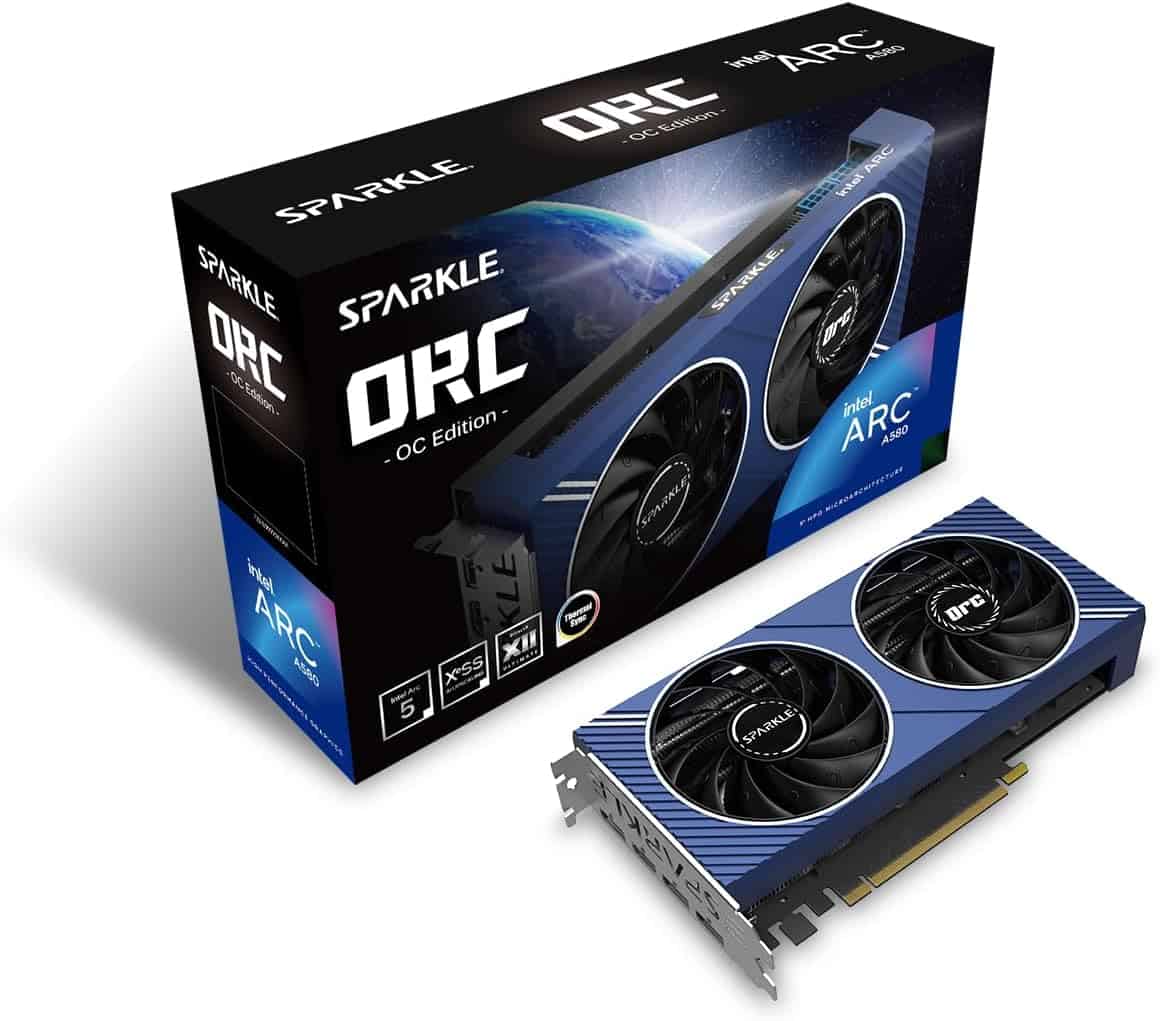
- Architecture: Xe HPG
- Xe-cores: 24
- VRAM: 8GB
- Bandwidth: 512 GB/s
- Memory bus width: 256-bit
- Clock speed: 1700 MHz
The Sparkle Intel Arc A580 ORC OC Edition is an interesting option if you want a 1080p gaming experience with the latest features like ray tracing and XeSS upscaling at a low price.
- Good for 1080p gaming
- Advanced ray tracing and XeSS upscaling
- DisplayPort 2.0-ready outputs for futureproofing
- May have driver issues as the card is relatively new
If you prefer having Intel Arc GPUs in your build, then we think that the Sparkle Intel Arc A580 ORC OC is a suitable option.
To begin with, the card features the Intel Arc A580 chipset, which is built on Intel’s Xe HPG architecture. It might not be as established as NVIDIA or AMD, but the GPU promises features like hardware-accelerated ray tracing and Intel XeSS upscaling technology.
Further, the graphics card that we have chosen comes with 8GB of GDDR6 memory on a 256-bit bus, which should be sufficient for textures and assets in modern games. Plus, you get 16 Gbps memory speed, which should smoothen data transfer and reduce stuttering during gameplay.
The Sparkle edition comes with TORN Cooling, which which includes dual customized axial fans and a 2.2-slot design for efficient heat dissipation.
PCWer
Coming to thermal management, the Sparkle edition comes with TORN Cooling, which which includes dual customized axial fans and a 2.2-slot design for efficient heat dissipation. Plus, you also get a full-metal backplate, which might help in cooling.
As far as connectivity is concerned, the GPU comes with an HDMI and three DisplayPort 2.0, which should allow you to connect to peripherals easily. However, note that the GPU does not have the new HDMI 2.1 port.
Overall, the Sparkle Intel Arc A580 ORC OC Edition is worth considering as it promises advanced features at a competitive price.
What users say
On Amazon, the Sparkle Intel Arc A580 ORC GPU has a rating of 4.4 stars, and it has been rated by over 200 people. Most reviewers say that they were happy with the performance and build quality. One of the users wrote in a review – “Overall I think the A770 is a pretty solid GPU and worth the upgrade especially in budget builds looking to get that extra performance without spending a ton of money.” However, some users thought that the fan was noisy and reported micro stuttering.
Considerations for the best GPUs under $200
In case you didn’t understand the specs thrown around in the reviews above or still don’t know which card to choose, we have you covered. In this section, we’ll go through some of the most important considerations you should consider when purchasing the best GPUs under $200.
Performance
When you’re buying a GPU for $200 or less, you’re primarily buying a graphics card for 1080p gaming. From $100 to $200, most cards are built to perform well at 1080p and high/max settings at 60 FPS in modern games. Compared to the lower-fidelity graphics on console (generally equivalent to mixed medium settings on PC) and common resolution/FPS compromises, you’re already getting a much better gaming experience.
AMD cards in this price range will perform better than Nvidia cards in most scenarios but at the cost of a larger size and increased power consumption.
A few of the higher-end cards in this section – those straining against that self-imposed $200 cap and more VRAM – are also well-suited for gaming at higher resolutions. We’ll dive into that below. Find all our recommended budget graphics cards right here.
VRAM
Quite a bit under certain circumstances. More VRAM doesn’t generally contribute to raw performance in the same way that more RAM in your PC doesn’t. VRAM is used for streaming textures, managing post-processing effects, and managing high resolutions.
In short, the more VRAM you have, the better your card will be able to handle higher resolutions like 1440p, 1800p, and 4K. The rest of the card still needs to keep up, though, and GPUs in this price range generally aren’t suited for playing modern games at a native 4K, regardless of VRAM. For this price range, though:
- 4GB of VRAM is ideal for 1080p gaming at max settings and 1440p games with reduced settings.
- 8GB of VRAM is ideal for 1080p gaming at max settings, VR games, and 1440p games with high-resolution textures. With higher-end GPUs, this amount of VRAM is also suitable for tackling 1800p and 4K gaming scenarios.
Size
First, we will look at the length, which will generally be the greatest barrier to entry. Length is measured in millimeters and is the most likely reason a graphics card won’t fit inside your PC. This is especially a concern for users of prebuilt PCs and refurbished office PCs. Be sure to compare our measurements to the dimensions inside your chassis before making any buying decisions. You should be fine with most standard ATX and Micro ATX cases, but it’s still better to be safe than sorry.
Next, we have width, which is less important but still relevant for prebuilt users, specifically width. This is measured in PCI Express slots in your chassis, with 2-slot being the standard for most graphics cards. This won’t be a concern for any user-built PC (except certain slimline HTPCs and SFF ITX builds), but it can be a problem for certain prebuilt. You should be fine if you have at least 2 slots open in your chassis.


